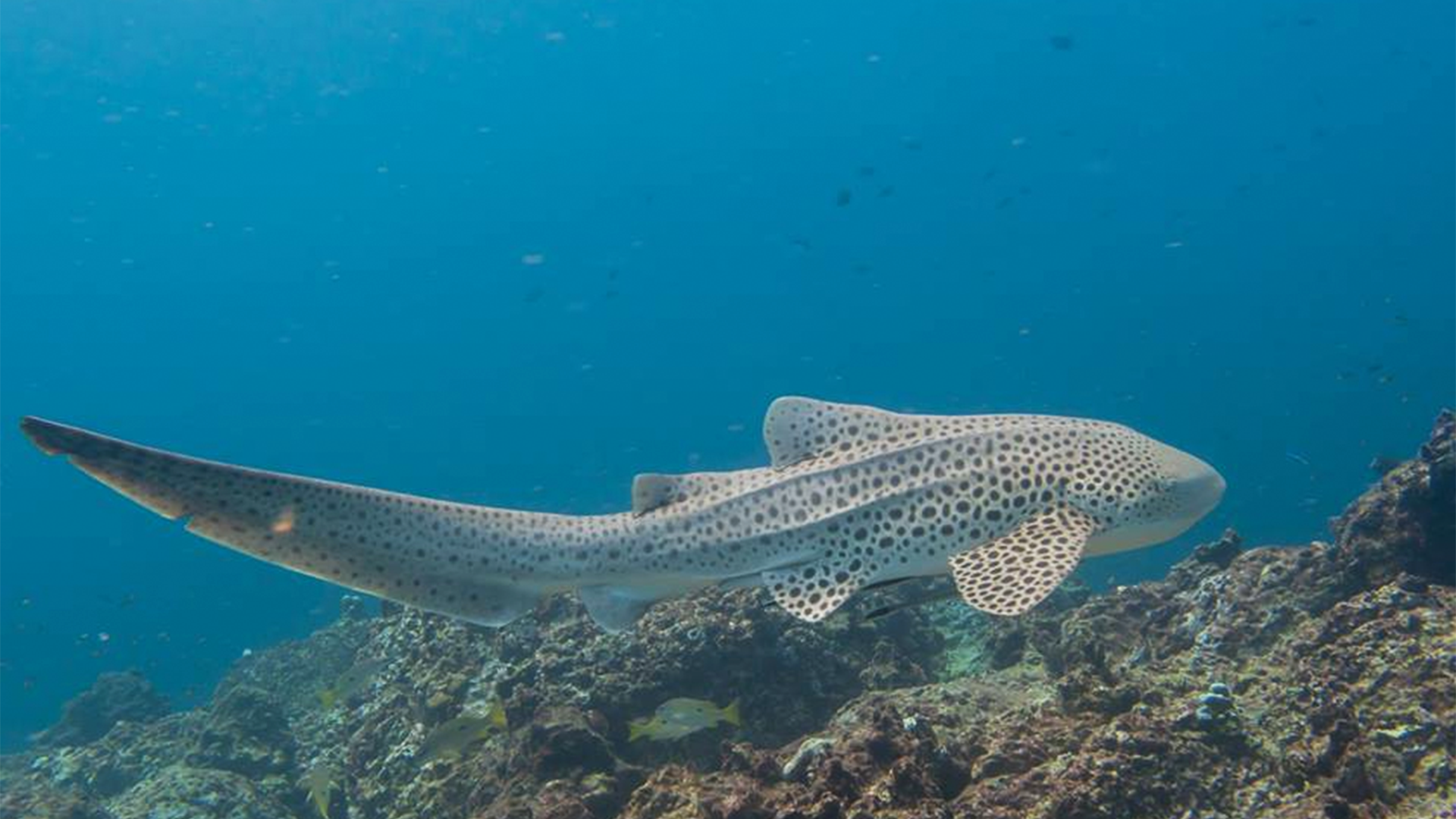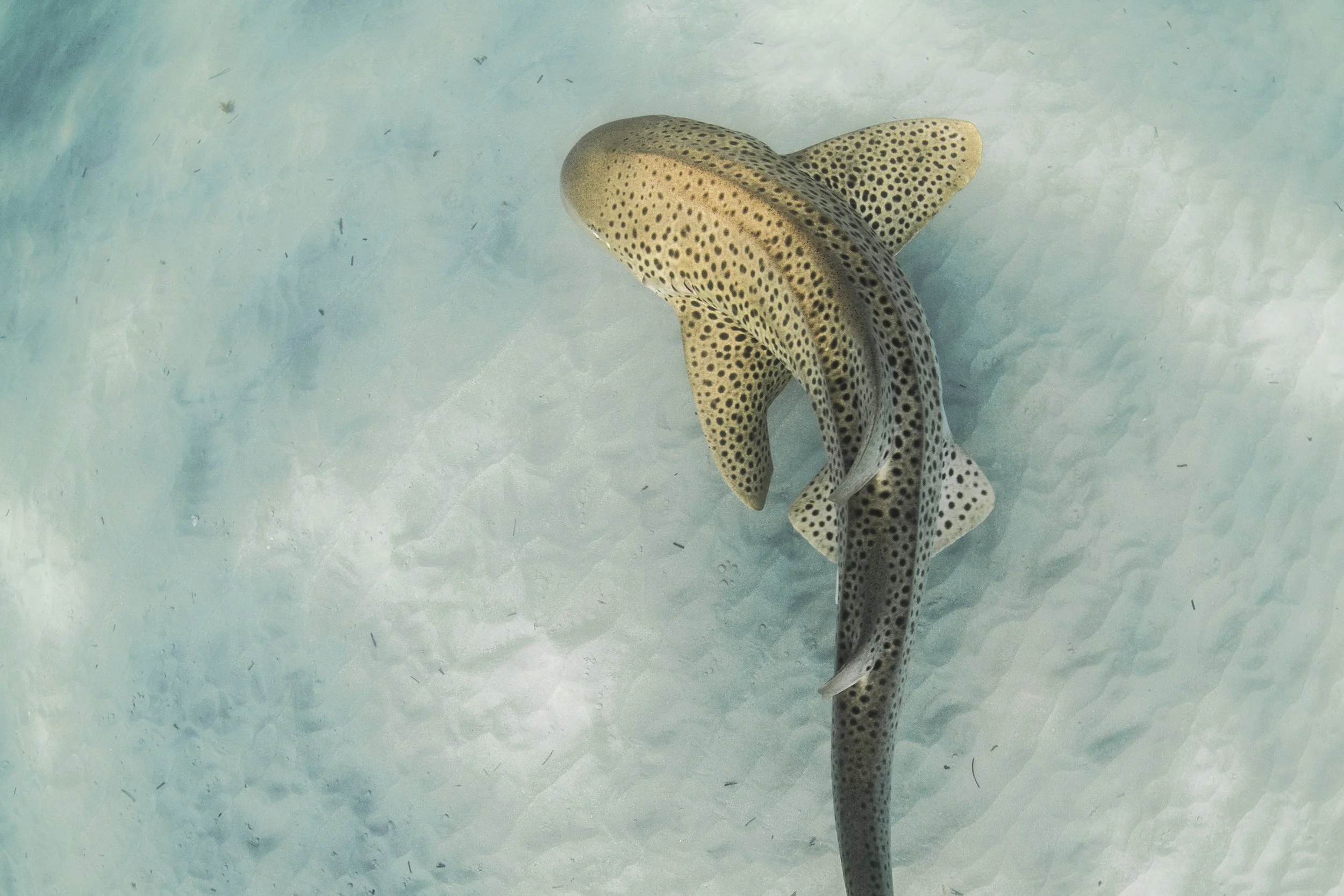
Leopard Sharks
Habitat & Distribution
Leopard sharks are unique species of carpet shark that are found in the warmer coastal waters of the Indian and West Pacific Oceans. They frequent coral and rocky reefs and sandy flats.
Appearance
Leopard sharks lay eggs and the juveniles hatch out with dark brown and white striped patterns, which is where their other common name, zebra shark, comes from. These stripes fade as they mature and turn into the leopard-like spots which they retain as adults.
Adults have five ridges running down their back (similar to whale sharks) and their single-lobed tail is almost as long as their bodies. Individual leopard sharks have unique patterns, which scientists use for identification.
Behaviour
Leopard sharks can grow up to 2.5m long. During the day you may see them resting on the seafloor or slowly swimming around reefs or at the surface. They likely hunt for prey at night, and feed mostly on crustaceans, molluscs and small bony fish.
While the sharks are mostly solitary, they have been observed to form seasonal aggregations. They are oviparous, with females laying several dozen large egg cases (known as a ‘mermaid’s purse’) and anchoring them to the substrate via long hairlike structures.
Conservation status
Leopard sharks are hardy animals in aquaria, and have emerged as popular ecotourism attractions.
In many parts of the world their populations have been severely reduced from overfishing. They are listed globally as Endangered on the IUCN Red List of Threatened Species.
Latest research
-
Publications…
-
Publications







